COMMEMORATING THE COMMONWEALTH CASUALTIES OF BOTH WORLD WARS
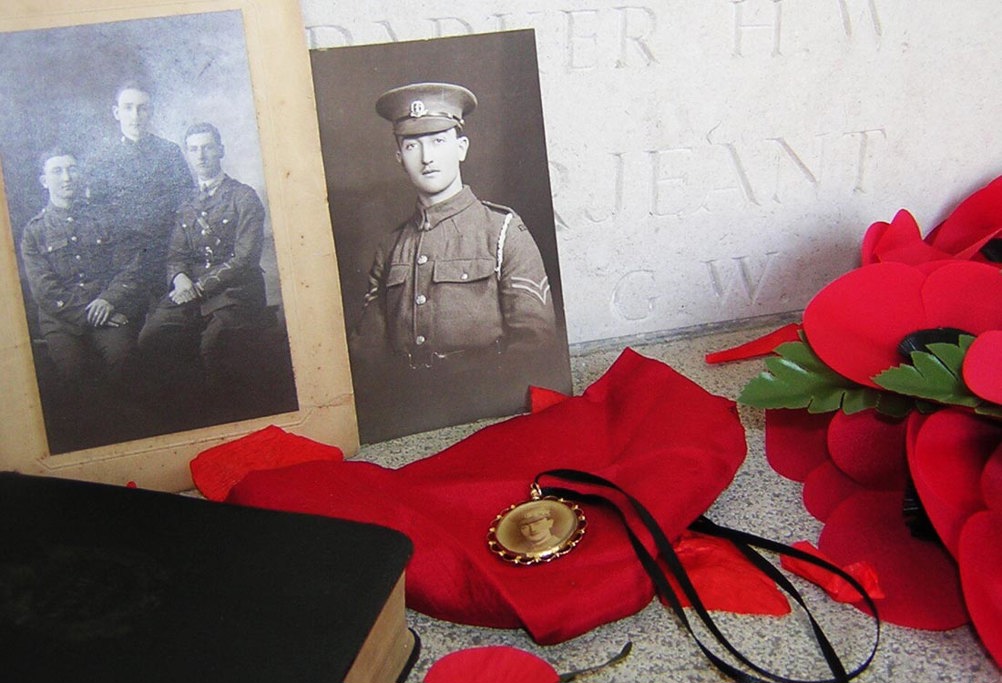
The War Commemorations team are responsible for maintaining the CWGC’s casualty war records collated after each of the world wars.
This casualty information from the military authorities, the work of the Graves Concentration and Registration units and the next of kin relates to the burial and identification of all those who are formally designated as Commonwealth war casualties. They now form our casualty database and provide the essential information we need to commemorate each casualty correctly. We amend information and correct historic errors on a daily basis.
"The Commemorations team ensures all Commonwealth war casualties are commemorated correctly with dignity and honour"

Who does CWGC Commemorate?

Photo: courtesy IWM
The Commemorations team ensure that CWGC commemorates all Commonwealth war casualties. Not everyone who lost their lives during the two world wars is formally designated a war casualty. The intention was to ensure that everyone who had died during the official dates of the conflict and as a result of their war service would be formally commemorated.
To achieve this, Commonwealth military and auxiliary organisations set individual criteria to determine which of their servicemen and women qualified. Additional rules were introduced for Commonwealth civilians killed during the Second World War.
Check the War Casualty Eligibility Policies
Individuals may not have been commemorated for various reasons. Many people died during the war years but in circumstances which mean they don’t meet the relevant criteria. Others were missed from a key record due to an administrative error.
Often neither the military authorities nor the Commission were informed of the death of former servicemen and women who died after they were discharged. Where evidence confirms that the circumstances of their death meet the requirements set out in the Royal Charter we will arrange for them to be commemorated.
Send us a case of non-commemoration
How are world war casualties commemorated?
Wherever possible CWGC will commemorate a war casualty at the site of their grave, usually with either a Commission headstone or plaque. Burials outside a CWGC war cemetery or plot were not arranged by the military authorities and as a result, even though we have a record of a casualty, we may not know where they were buried. Families may also have chosen to mark a final resting place with their own private memorial.
CWGC does not have the right to make changes to a private grave and we will always respect the wishes of the original next of kin. Therefore, we will not replace a private memorial unless it no longer adequately commemorates a casualty and only then with the consent of the family and relevant church or local authority. Although CWGC commemorates Commonwealth civilian casualties of World War II in the Roll of Honour held at Westminster Abbey, our remit does not extend to marking or caring for their graves.
If we are informed about an unmarked war grave, we will work with all those concerned to arrange for appropriate commemoration. If we cannot establish the precise location of the grave within the cemetery, churchyard or burial ground, or we cannot mark or maintain a grave because of local conditions, we will arrange for the casualty to be commemorated at an alternative location. If the circumstances change, we may reverse the alternative commemoration arrangements.
Send us evidence showing the location of an unmarked war grave
The identification of the unknown fallen
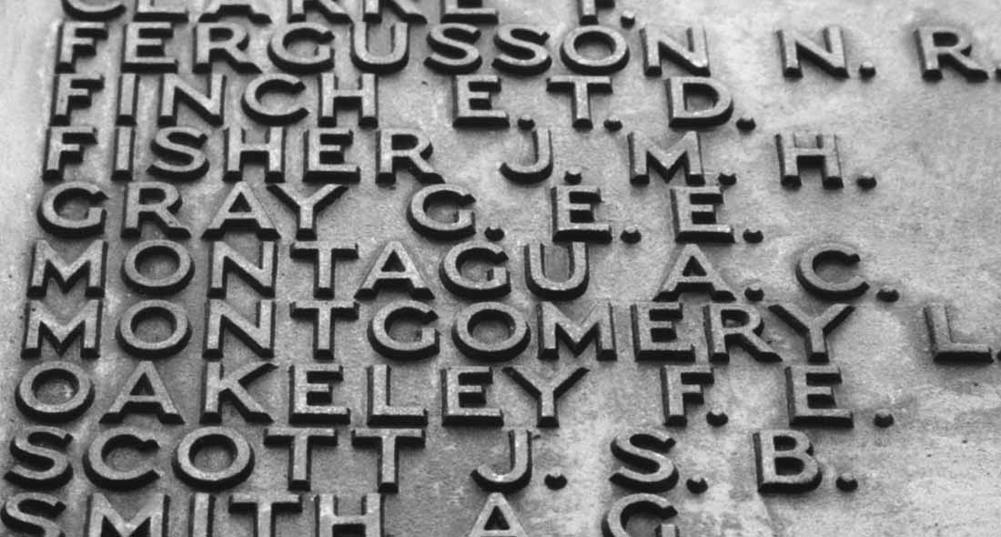
At the end of the two World Wars, extensive efforts were made by both the military authorities and the CWGC to identify the last resting place of those who were listed as ‘Missing’.
Despite these efforts, many graves in the care of CWGC could not be fully identified at the time. However, as further information has come to light over the years, and through the diligence of researchers, the public, families, the CWGC, national defence authorities, and relevant agencies, it has occasionally been possible to name some of those whose graves were previously marked as ‘Known Unto God’.
The decision to identify an individual is made by the national defence authority. The process of identification requires a high level of evidence and in the first instance, this evidence is submitted to the CWGC and is thoroughly reviewed following a robust and transparent research methodology. It is then forwarded to the national defence authority who carry out their investigation to locate evidence, interpret data and ensure all proposals are considered thoroughly. This collaborative investigation process ensures that the outcomes are reliable and consistent.
When identification can be confirmed, and where direct descendants can be traced, the national defence authority officially informs the family. It is important that it is the national defence authority who informs the family, as speculative identification can cause considerable distress to families if proved incorrect. The national defence authority will write to the original submitter(s) of the evidence informing them of the outcome of the investigation, and a public announcement is made.
The CWGC and the national defence authorities make every effort to acknowledge the efforts of everyone concerned with an identification. Where consent is forthcoming and data protection regulations and national privacy laws permit (and these will vary depending on the country), we will name the individual(s) who submitted the case on the CWGC website. Should a Rededication Ceremony take place, they may be invited by the national defence authority and be publicly recognised within the service.
There are many people who provide the catalyst for these investigations. Some may have submitted identical or opposing cases for the same grave and in other cases a more limited submission may include the crucial evidence. Collectively, CWGC and national defence authorities will endeavour to ensure that all who wish to be, or can be named, are recognised.
Regardless of the pathway and the researchers or agencies who may contribute to an identification, the most important acknowledgement must go to the service member, their sacrifice, their units, and their family. All those involved should be rightly proud of their contributions, even if not everyone can be acknowledged in all communications.
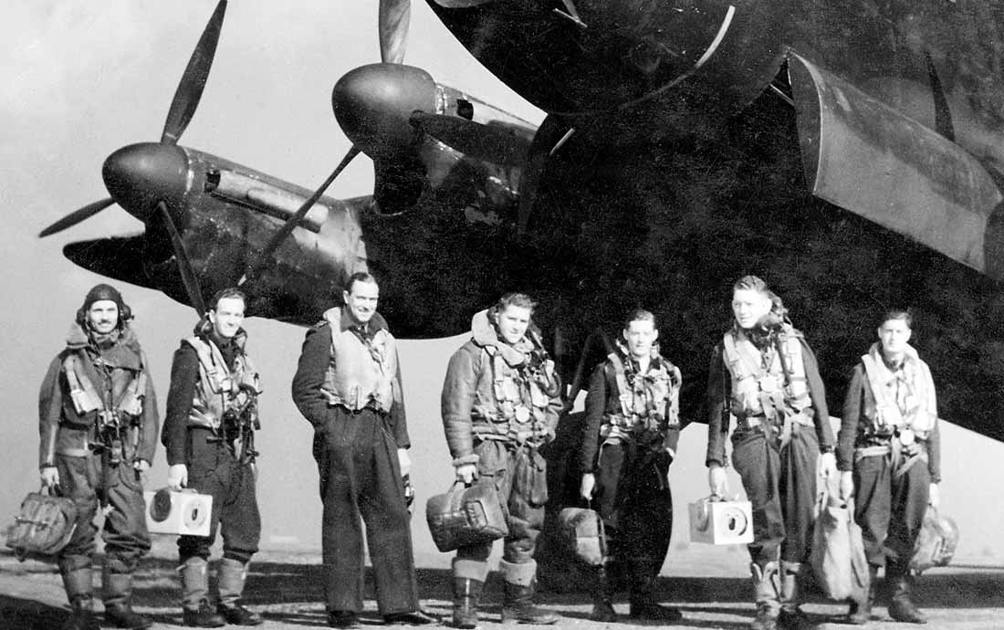
Photo: RAF Air Historical
What else are CWGC records used for?
CWGC war records are crucial in both determining the identity of human remains discovered today on the former battlefields and in efforts to confirm who may be buried in an existing CWGC grave. The Commemorations team coordinate both categories of casework for all Commonwealth war casualties, working closely with Commonwealth military authorities and our partner organisations.
Are casualties from the world wars still found?
CWGC is informed of around 80 new discoveries of human remains worldwide each year.
Although there was a systematic search of the battlefields after both world wars, the conditions meant that some bodies were not located. Today, the expansion of towns and cities, the associated improvements to infrastructure such as roads and wind turbines, together with the seasonal cycle of agricultural work, results in the discovery of human remains on the former battlefields on a regular basis.
Every country has its’ own regulations which apply when human remains are found. The police must be informed immediately in case they are those of a more recent victim. It is also possible a much older archaeological site has been disturbed. Once it has been confirmed the remains are those of a Commonwealth war casualty, CWGC will be notified.
We work with archaeologists, law enforcement and military authorities according to the procedures that apply in each country. In France, CWGC Recovery Officers will attend the site to exhume the remains and any artefacts, as we have done since the end of the First World War.
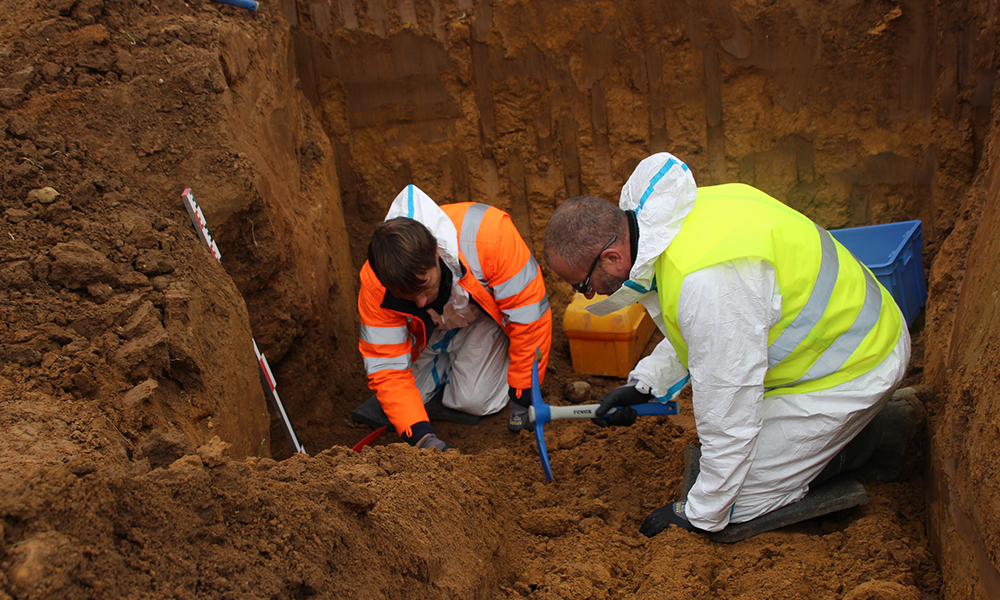
What happens to newly discovered world war casualties?
The casualty will be reburied in a CWGC cemetery close to where they were found whether identification is successful or not. The policy of non-repatriation of Commonwealth war casualties still applies and ensures that all those who died together are buried together, irrespective of how wealthy or influential their families were or when they were buried.
The military authorities will arrange for a formal burial ceremony and CWGC will mark the grave with a Commission headstone, bearing as many details as it has been possible to establish. Where a casualty has been identified and close family traced, the Commemorations team will work with them to choose a religious emblem or none, together with a Personal Inscription.
The burial protocols established during the Great War are still followed today with casualties who were found together being buried in joint or collective graves, with their headstones touching.
Members of the public are welcome to attend burial ceremonies.
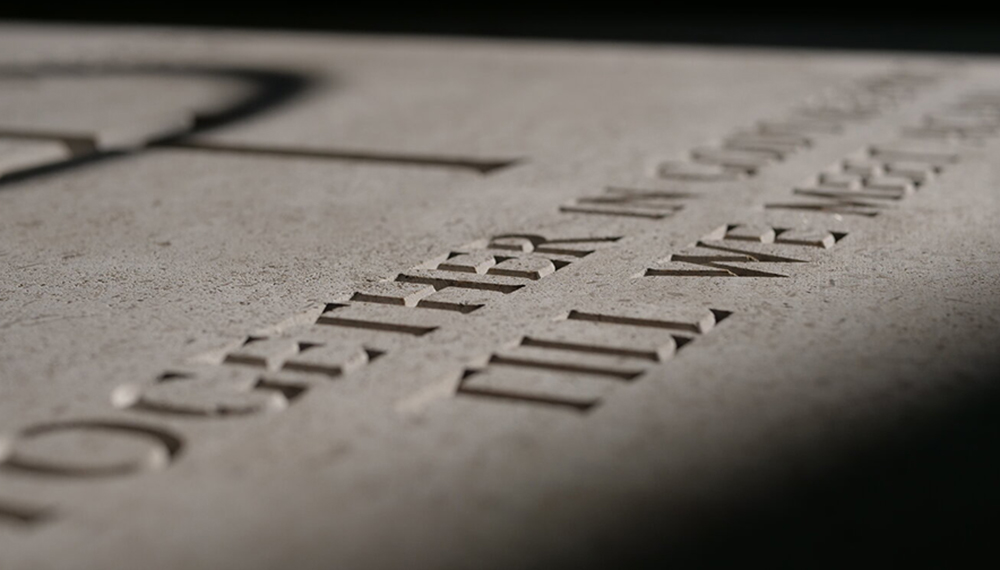
Can you identify casualties who are already buried in a CWGC grave, but without a name?
Once a Commonwealth war casualty is buried, CWGC and our Member Governments believe that, as far as possible, they should be allowed to rest in peace. Although every effort was made post war to identify the graves within our care, occasionally new evidence is sent to us suggesting a name for an individual who was buried as an unknown casualty.
Whilst we will always use documentary sources to investigate such cases, we do not allow the graves of Commonwealth war casualties to be disturbed for the purposes of identification. This includes DNA testing.
Learn more about Identification Cases
- There are two factors which usually lead a member of the public to submit an Identification Case: they have seen a headstone with partial details e.g. a rank, regiment or date of death but no name; or they have seen details on a concentration or burial record which are not on the current headstone.
- It may only have been possible to partially identify a grave post war, often because although the regiment, rank or date of death were known there was more than one casualty whose details matched and who was still missing at that time. In the intervening decades, as more identifications have been made, it may now be possible to eliminate all but one casualty and identify the grave in full.
- Although there may be details on our concentration and burials records showing that items bearing the details of a named casualty were found, in most cases these were considered by the authorities post war and found not to relate to the body. Equipment marked with a name or number was frequently re-issued to a different man; a surprising number of men dropped their identity disc or gave personal documents to a comrade who was then killed. The records which you can see on our website provide a series of snapshots, but not the full picture of the extensive investigations which were conducted post war.
- We know that those conducting those investigations had access to far more information than we do today. They built up a detailed picture using a variety of physical evidence and information from artefacts, corroborated by eyewitnesses or personal statements. Unfortunately, the majority of their files have not survived. Therefore, unless we are provided with significant new evidence which was not available to them, we cannot overturn their decisions.
- The CWGC Commemorations Team will review all the evidence submitted, in conjunction with our records. We need to be confident that
- the details registered for the specific grave have been interpreted correctly and match those of the candidate at the time of their death;
- that the candidate can be placed at the location where the body was found;
- that all other potential candidates with the same details have been listed, investigated and excluded;
- that there are no other graves with the same details where the candidate could also be buried.
- If each of those tests has been met, then we will assess the case as having merit and will forward it to the relevant service authority.
- They will use their specific expertise and any additional records available to them to verify our appraisal or raise any discrepancies.
Whilst we will always endeavour to agree a positive outcome, in the majority of cases, there will be inconsistencies or gaps in the evidence which mean that the level of proof needed cannot be met.
How to prepare an Identification Case - updated Nov 24
All Identification Cases should be submitted to the CWGC Commemorations team in the first instance.
As in most cases it is our records which will provide the key information as to whether a grave has previously been investigated, and whether there is sufficient detail to enable a full investigation.
The military authorities remain responsible for the identification of their missing service personnel.
If the documentary evidence is clear and convincing, they will confirm the identification of the grave. We will work with them to rededicate the grave with a new headstone or plaque bearing the name of the casualty and, if close family can be traced, a religious emblem or none and Personal Inscription. Members of the public are welcome to attend these ceremonies and commemorative events.
See our calendar of upcoming events
We are very grateful to those members of the public who submit such cases to us, in particular the dedicated researchers who work tirelessly to trace previously unseen records in archives around the world and enable these graves to finally be identified after so many years.
Check the list of completed and ongoing cases
Special Memorials
We also receive requests from family members for a Special Memorial to be placed in the war cemetery where they believe their relative might have been buried. These are headstones with ‘superscription’ text at the top, only used in very specific circumstances. They are not an alternative to commemoration on a Memorial to the Missing.
Learn more about special memorials
- There was considerable debate post-war about how to commemorate those whose bodies could not be found. There had been a number of different approaches taken during the war, including the placing of ‘Memorial Crosses’ within battlefield or communal cemeteries. These were often used to commemorate individuals, groups or units where it was recognised by their comrades that recovery would not be possible, or where they wished to have a focal point for commemoration.
- Initial thoughts were that this form of commemoration would be extended to cover all those who remained missing, perhaps with markers around the edges of cemeteries. However, it was quickly established that this was not a practical solution; a vast amount of space would be required to name each casualty individually on a separate marker.
- It was also recognised during the process of concentration and cemetery construction that ‘Memorial Crosses’ could not easily be distinguished from grave markers and had sometimes mistakenly been thought to confirm the presence of a grave where none existed. CWGC records show those concentrating graves recorded the existence of ‘Memorial Plots’ and efforts to exhume during which no bodies were found. This resulted in the policy decision that the Commission would avoid any form of commemoration which might give the impression of a ‘false grave’.
- In time the concept of Memorials to the Missing was developed and all ‘Memorial Crosses’ were removed from cemeteries. Today, the Commission continues to consider commemoration on a Memorial to the Missing to have equal significance to that on a headstone or plaque.
- In very specific circumstances the erection of a Special Memorial could be authorised. Although they look similar to a Commission headstone, they have a ‘superscription’ at the top of the stone which summarises the reason for it being erected.
- Each of the superscriptions has a carefully defined meaning and can only be used in those specific circumstances. Only some may still be used today.
- Where it is not possible to erect the headstone directly on the grave, but it can be placed elsewhere in the same cemetery, then a Special Memorial with the superscription ‘Buried elsewhere in this cemetery’ may be used.
- Where it is known that two or more named casualties are buried in specific graves, but it could not be confirmed which casualty was buried in which grave, then the superscription ‘Buried near this spot’ may be used.
- Where there was reasonable, but not absolute proof, that a named casualty was present within the boundary of the constructed cemetery the superscription ‘Believed to be buried in this cemetery’ was used.
- This superscription was only used where the physical evidence found during the laying out of the graves and construction of the cemetery was less than absolutely conclusive when compared to the documentary evidence.
- It should not be misinterpreted as meaning that at a previous time a casualty was thought to have been buried there; nor that they might have been concentrated to the site as an unidentified casualty.
- As we do not have the same access to the physical evidence that those conducting burials within the constructed cemeteries had, the Commission no longer erects Special Memorials with the superscription ‘Believed to be buried in this cemetery’.
- Special Memorials which do not mark an actual grave are placed so that they cannot be mistaken for such e.g. around the edge of a cemetery at a different alignment from graves.
Headstone and Panel replacements
Each aspect of the work of the Commemorations Team may result in a new or replacement headstone, plaque or memorial panel. Where we engrave a headstone for newly discovered or identified casualties, we will arrange for their previous commemoration on a Memorial to the Missing to be removed when the panel is next replaced, although it can be many years before this happens.
Our War Memorials are historic structures and so we don’t remove a single name as this may damage the stone. If a headstone is broken or becomes too weathered or worn for the casualty’s details to be read clearly, we will arrange for a replacement of the correct stone type to be engraved and be installed.
Read more about Caring for War Dead and our graves
Why Do We Commemorate War Dead?
CWGC is largely thanks to the vision and determination of Fabian Ware, the commander of a mobile unit of the British Red Cross, who became determined that the war dead would not be lost or forgotten.
Commemorative practices such as recording and caring for graves or erecting national war memorials and cemeteries are a means of honouring both those in the armed forces and civilians who sacrificed their lives.
We continue to work to ensure that all the Commonwealth men and women who died during both world wars are commemorated in a manner befitting their service and sacrifice.

